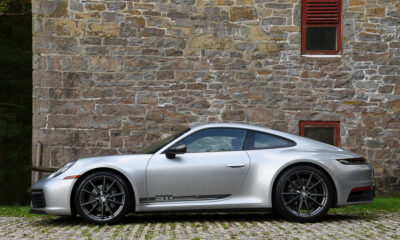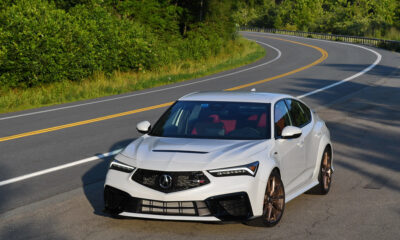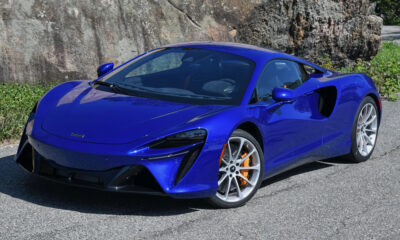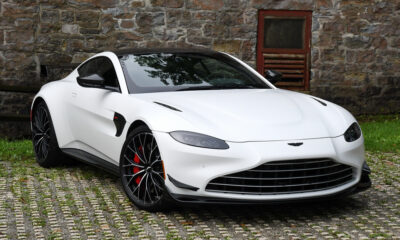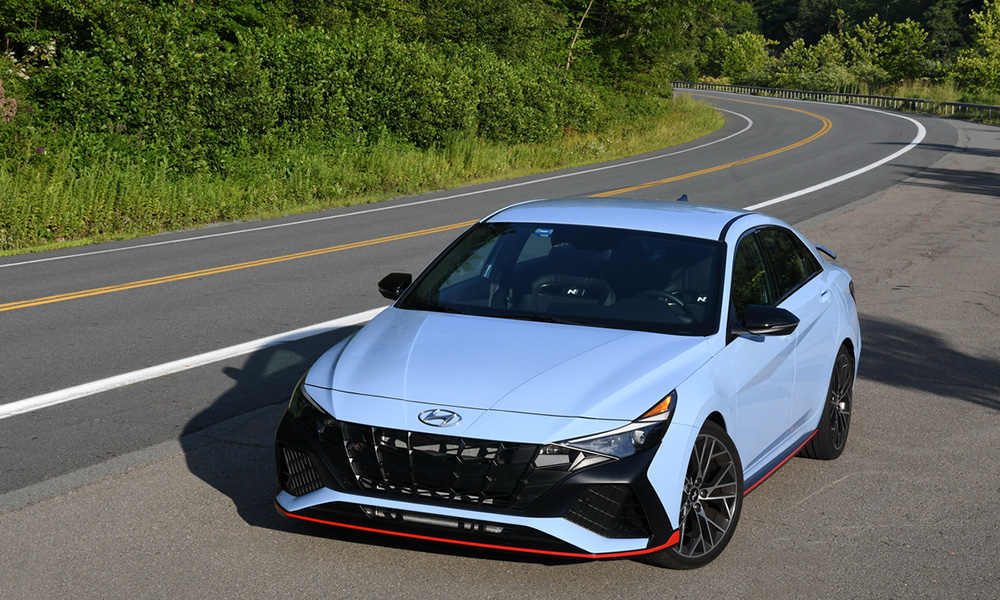
Photo: David Haueter
It wasn’t that long ago that the idea of Hyundai building race cars that would win championships in one of the most competitive touring car series in the world seemed incomprehensible, yet that’s exactly what they did.
The Elantra N TCR scored 19 podium finishes in IMSA Michelin Pilot Challenge in 2022, including four class wins on the way to the championship, and when you drive the road car on which it’s based, you gain a better understanding of why it makes such a good race car.
Albert Biermann gets a lot of the credit for the goodness of the Elantra N road car, which is a prerequisite for a competitive touring car.
Biermann spent decades at BMW M Motorsport and was a central figure in development of the M3 models since the 1980s, including the race versions. Biermann left BMW and went to Hyundai in 2015 and a lot of what he learned at BMW went into the development of the Elantra N, as well as the Veloster N.
The Elantra is now in its seventh generation and has been around since 1990. Like every other model from every other manufacturer, it’s gotten larger and heavier over the years, and has also gotten a lot sleeker, even in base model form.
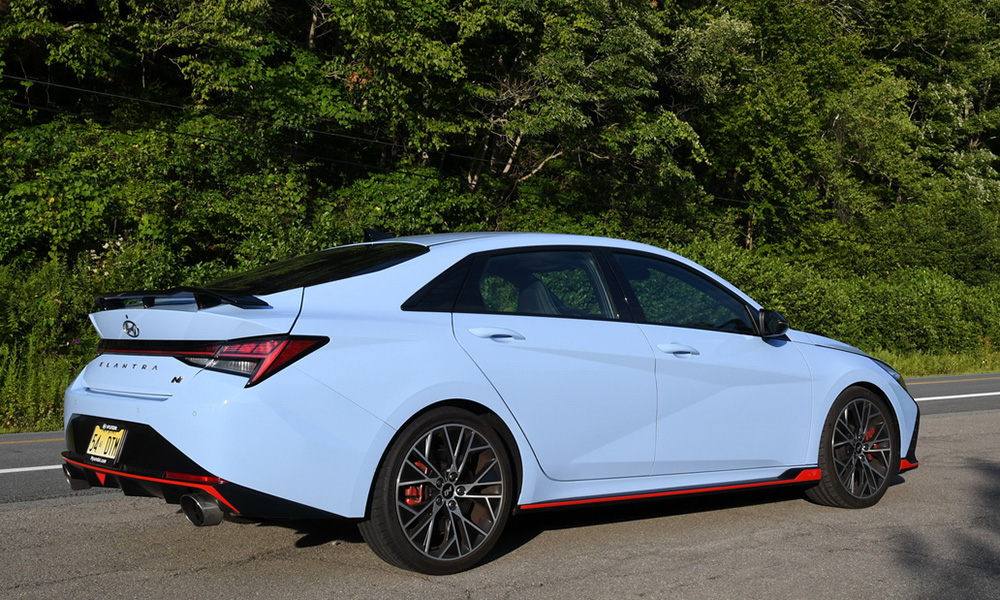
Photo: David Haueter
What used to be a boxy, boring sedan is now swoopy and adventurous in its design. The current generation Elantra is the first to get the “N” treatment, but was preceded in Hyundai’s high-performance lineup by the Veloster N.
The Elantra N is immediately recognizable from lesser Elantra models by the red trim that runs along the bottom of the side skirts as well as the front spoiler and rear bumper. There’s also that big wing on the trunk which frankly seems a bit much for this car, as well as the sportier (and larger) wheels and the fat exhaust tips.
The most controversial element of the Elantra N design is the gaping front grill and black plastic that covers nearly the entire front end of the car. It’s aggressive for sure but takes some getting used to. The race car has a more attractive front end than the road car.
The motivation under the hood of the front-wheel drive Elantra N is a 2.0-liter turbocharged four-cylinder that puts out 276 horsepower at 5,500-6,000 rpm and 289 lb.-ft. of torque at 2,100-4,700 rpm, with a compression ratio of 9.5:1.
It also has performance-enhancing hardware like a variable exhaust, an electronic limited slip differential, big 14.2-inch vented brake rotors up front and 12.4-inch at the rear, and the choice of either a six-speed manual or 8-speed dual-clutch automatic.
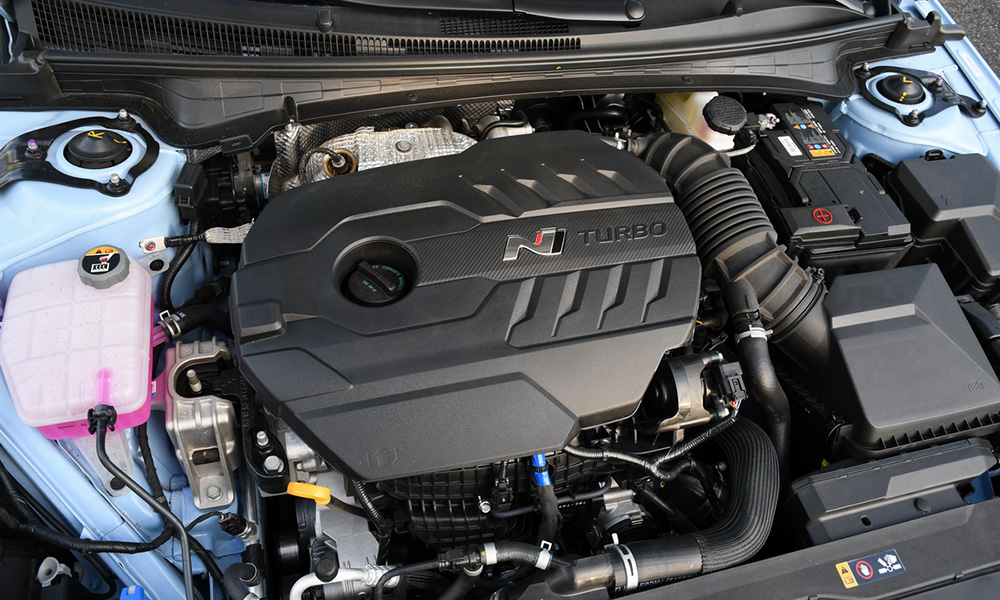
Photo: David Haueter
The variable suspension features Macpherson struts with coil springs in the front and a multilink setup in the rear, and the 19-inch wheels wear sticky Michelin Pilot Sport 4S tires. The Elantra N is also fitted with front and rear stabilizer bars and a rear chassis brace.
Curb weight on the Elantra N is 3,186 pounds with the manual or 3,296 with the automatic, with is on par with one of its primary competitors, the Subaru WRX.
One of the influences that Biermann no doubt had on the Elantra N is the adjustability of the throttle, steering, transmission, and suspension with various driving modes that cover the gamut from Sport and Normal to Eco. There’s also a high degree of adjustability, just like BMW M cars.
The Elantra’s “N Mode” is very similar to the M modes that BMW M models have, which allows the driver to tailor settings to activate at the push of a button on the steering wheel. There are also adjustable settings for the exhaust to make it more vocal. There’s even a track mode.
Inside, the Elantra N has a lot of grippy Alcantara on the seats, which in the front are six-way adjustable sport buckets that are comfortable but provide great lateral support for sporty driving, as well as alloy sport pedals to enhance the sporty demeanor of the car.
Hyundai also gives the driver a lot of information to access on the display, which changes format based on the driving mode you’re in. The car is also loaded with safety features like forward collision avoidance, blind spot avoidance, and lane-keeping assist.
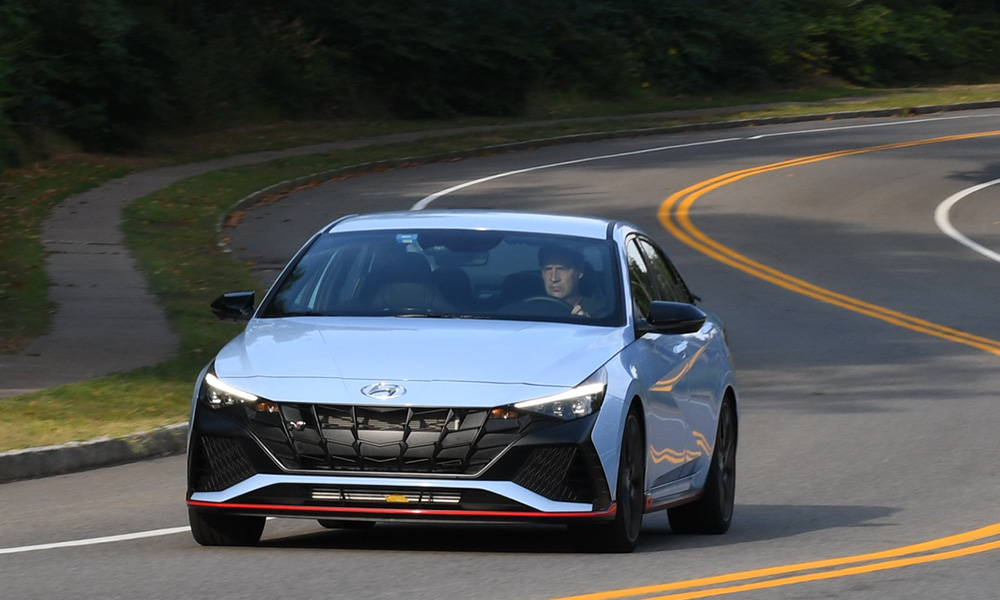
Photo: David Haueter
Any thoughts that the Elantra N is just a tarted up Elantra are dispelled once you get behind the wheel.
The Elantra N quickly proves itself to live up to its spec sheet and its exploits as a race car. First impressions are that this car is fun to drive, with a great mix of balance and power, strong brakes and good ergonomics.
Like BMW M cars, the Elantra N can go from being a sedate sedan for around town to a true sports sedan at the push of a button. With the car in its sportier chassis settings, the turn in is sharp and well controlled, with just a touch of understeer, and there’s surprisingly minimal body roll even when pushing it harder.
With 276 horsepower, the Elantra N is plenty quick, but it never feels like there’s too much power for the chassis and there’s minimal to no torque steer. Working the clutch and the shift lever as you work through the gears is also a pleasure, with precise shifts and a nicely weighted pedal.
I haven’t seen any sales figures from Hyundai, but I’m surprised I don’t see more Elantra Ns on the road.
With an MSRP of $32,150 USD, it seems like a great bargain for the features and performance that it has, and it seems like a great value when compared to other competitive cars like the Subaru WRX and the Acura Integra.
The car comes so loaded that the only option is the dual-clutch automatic at $1,500. I liked the Elantra N so much that I would be seriously considering one if I were in the market for a new daily driver.
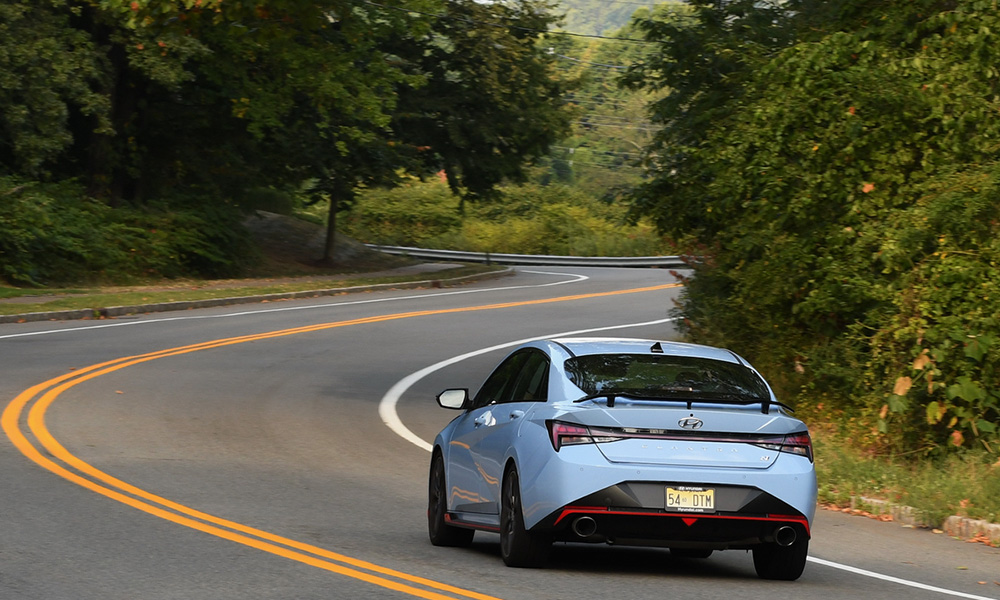
Photo: David Haueter



















